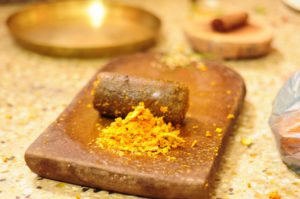Measuring what you care about: turmeric edition
There’s a story on Stuff, with more detail at either Nature News or Scientific American, that turmeric doesn’t work. The original paper in the Journal of Medicinal Chemistry isn’t open access (actually, is), but its abstract is. It’s not new chemical research; it’s a review of what’s known about curcumin, the allegedly-active ingredient of turmeric, and why they don’t believe it. In the opposite of the academic cliche, the point of the paper is to argue that less research is needed on curcumin and similar compounds.
StatsChat isn’t MedChemChat, but the paper is relevant for two reasons. First, turmeric is one of the foods that attracts low-quality, over-publicised research, which does end up on StatsChat. Second, the reason they don’t believe in turmeric is relevant.
Turmeric, if you believe the stories, appears to have pretty much every interesting biochemical effect anyone’s ever looked for. That phenomenon has been seen before in medicinal chemistry, and the experience is that compounds which pass a huge range of screening tests tend to do it by cheating.
In 2010, two Australian chemists wrote a paper about “Pan-Assay INterference compounds” (PAINs) (abstract, story, blog post by another chemist). Most biologically interesting properties a compound might have aren’t visible to the naked eye. A lot of work goes into devising subtle and precise assays to measure them. A compound can mess up the assay and appear to pass the test without having the specific effect you’re looking for. One important reason for PAIN is a compound that reacts with a wide range of proteins.
Turmeric, as you will no doubt have guessed, looks like a PAIN. This nicely explains its excellent test-tube performance with its generally disappointing performance given as food to whole animals or people. The researchers are arguing that turmeric seems to work in the lab because it cheats, and that it seems safe but less useful than hoped in people and animals mostly because it’s not absorbed well.
As the stories are careful to note, none of this definitively implies that curcumin (or some other tumeric ingredient) couldn’t have a beneficial effect, just that most of the evidence isn’t credible. The same argument applies to some other trendy antioxidants.
It’s a recurrent theme on StatsChat that most data aren’t the real thing you care about. The speedometer needle position isn’t the same as speed; saliva THC concentration isn’t the same as impairment; methamphetamine traces on a wall aren’t the same as use — or manufacture– by a tenant; having a Chinese name isn’t the same as being an overseas housing speculator. The map isn’t the territory.
Thomas Lumley (@tslumley) is Professor of Biostatistics at the University of Auckland. His research interests include semiparametric models, survey sampling, statistical computing, foundations of statistics, and whatever methodological problems his medical collaborators come up with. He also blogs at Biased and Inefficient See all posts by Thomas Lumley »
